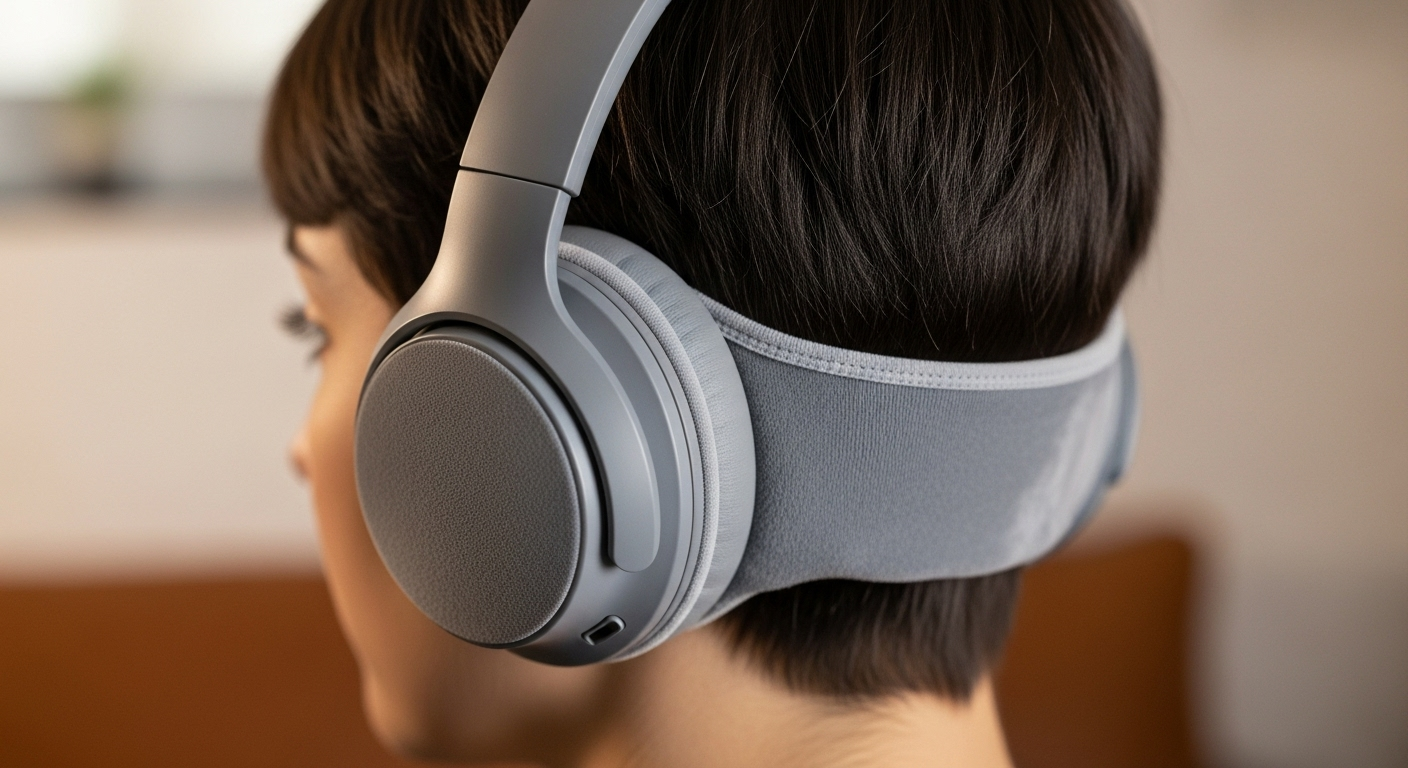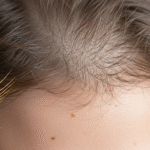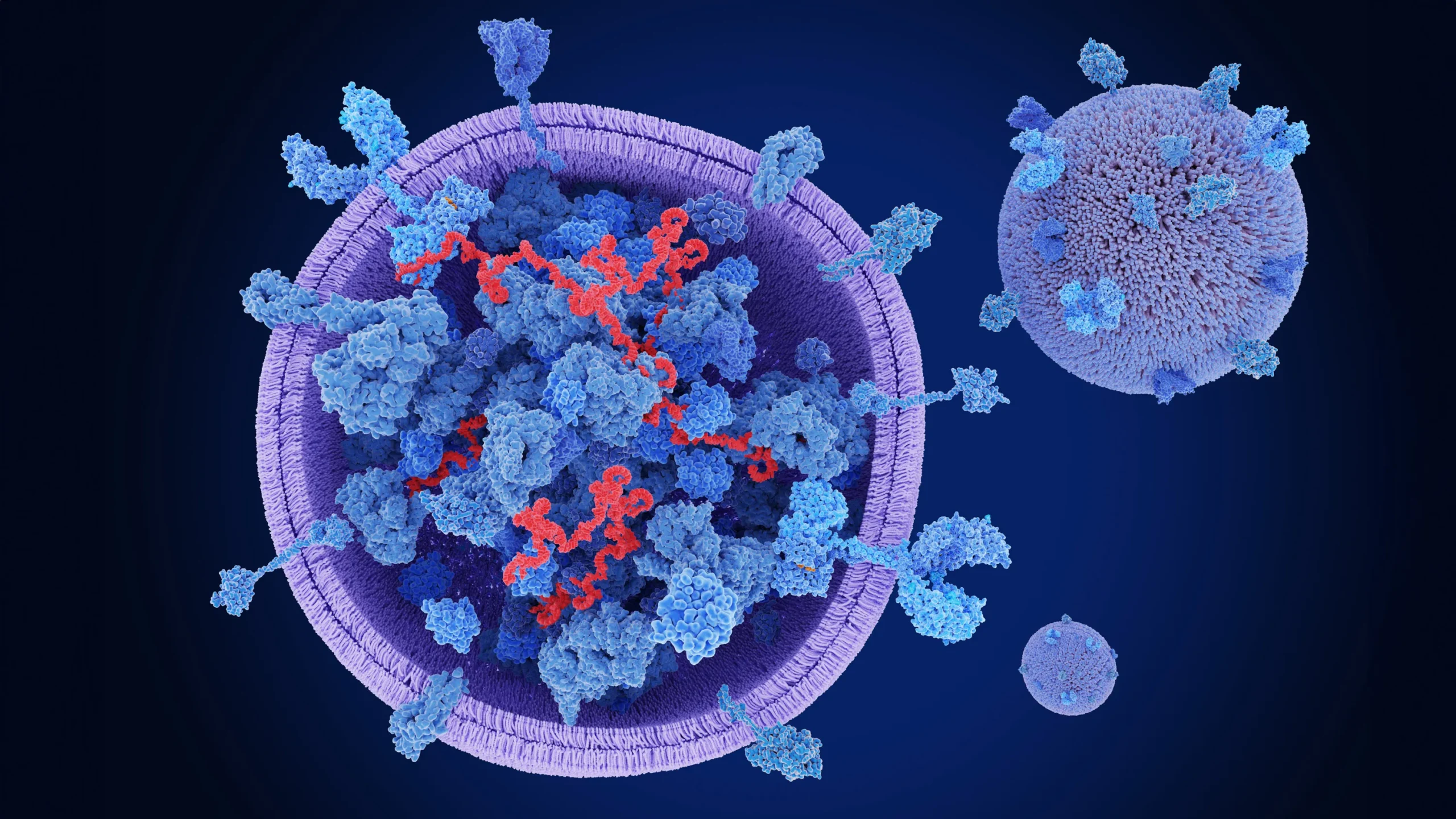Headphones have become an essential part of our daily lives, but did you know they might be linked to hair loss? Many people are unaware that prolonged headphone use could lead to scalp irritation, thinning hair, or even traction alopecia. In this article, we’ll explore how Can Headphones Cause Hair Loss, the types of headphones …
Headphones have become an essential part of our daily lives, but did you know they might be linked to hair loss? Many people are unaware that prolonged headphone use could lead to scalp irritation, thinning hair, or even traction alopecia.
In this article, we’ll explore how Can Headphones Cause Hair Loss, the types of headphones that are more likely to affect your hair, and how you can protect your scalp while still enjoying your music or podcasts.
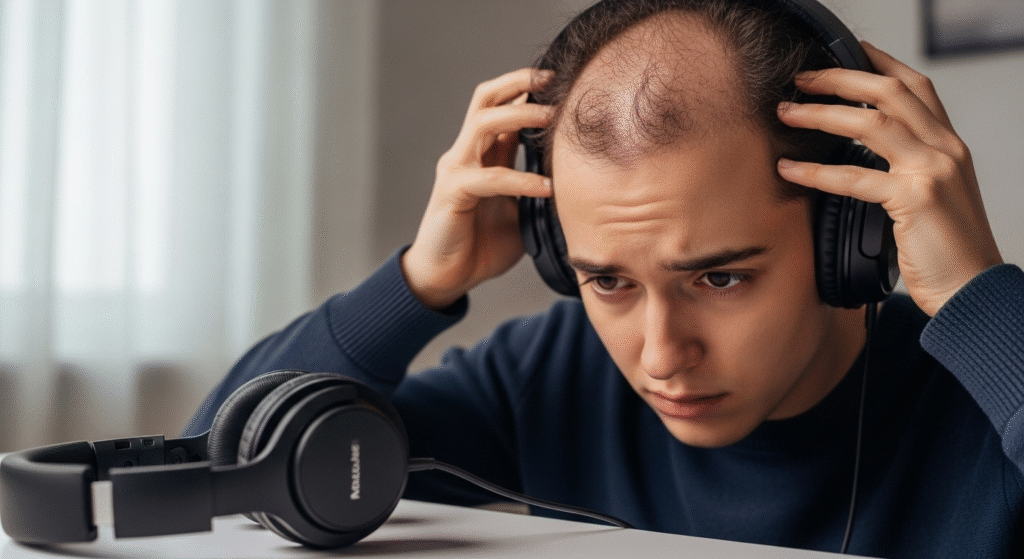
The Link Between Headphones and Hair Loss
Pressure on the Scalp and Hair Follicles
Headphones, particularly those that sit tightly on the head, can apply consistent pressure on the scalp. This pressure can disrupt the natural hair growth cycle, causing hair follicles to weaken and eventually leading to hair thinning or shedding. The friction between the headphones and your scalp can irritate the hair follicles and trigger the shedding phase of the hair growth cycle, known as telogen effluvium.
When this pressure is sustained over long periods, it may also contribute to a condition called traction alopecia. This occurs when hair is constantly pulled or tugged, even slightly, which can gradually weaken hair follicles and lead to permanent hair loss if not addressed in time.
Traction Alopecia and Headphone Use
Traction alopecia is a form of hair loss that happens when hair is subjected to tension or friction for an extended time. It’s commonly associated with tight hairstyles like braids or ponytails, but it can also be caused by headphones.
On-ear headphones, which press directly onto the hair and scalp, are particularly notorious for causing this type of hair loss. Over time, the consistent pressure can lead to visible hair thinning around the area where the headphones sit.
Symptoms and Early Signs of Traction Alopecia
If you notice hair thinning or small patches of hair loss on your scalp after prolonged headphone use, traction alopecia might be the culprit. Early symptoms include:
- Increased hair shedding when removing headphones
- Tenderness or sensitivity around the areas where the headphones rest
- Thinning hair in specific regions, particularly the temples or behind the ears
How Headphone Design Can Affect Your Hair
Over-Ear vs. On-Ear Headphones
The type of headphones you use plays a significant role in determining how much pressure is applied to your scalp. Over-ear headphones tend to distribute the weight more evenly across the head, reducing direct pressure on any specific area. These headphones typically have larger ear cups that encircle the ear and are less likely to cause hair damage.
On the other hand, on-ear headphones, which sit directly on the ears, apply more concentrated pressure to specific spots on the scalp, increasing the likelihood of hair loss due to friction. The tighter the headphones, the greater the risk of causing hair thinning, especially if they’re worn for long periods.
Material and Fit of Headphones
The materials used in headphones can also affect hair health. Hard, tightly fitting headphones without sufficient padding can exacerbate the issue. Headphones made of soft, breathable materials with adequate padding will distribute the pressure more effectively and prevent friction damage. If your headphones feel too tight, consider investing in a better-fitting pair or using an adjustable headband to minimize scalp pressure.
Can Headphones Cause Hair Loss Permanently?
Temporary vs. Permanent Hair Loss
In most cases, the hair loss caused by headphone use is temporary and can be reversed once the source of the pressure is eliminated. However, if headphones are worn consistently over a long period without proper care, the damage to the hair follicles can become permanent. This is particularly true for those who already have sensitive scalps or are prone to conditions like traction alopecia.
If you’re noticing long-term thinning or bald patches that don’t seem to improve, it’s important to seek medical advice to prevent further damage. Early intervention can help reverse the effects of pressure-induced hair loss and allow your hair to regrow naturally.
When to Seek Professional Help
If you experience persistent pain, tenderness, or noticeable hair thinning due to headphone use, it’s time to consult a dermatologist or hair specialist. They can assess the severity of the hair loss and recommend treatments like topical minoxidil, which is effective for promoting hair regrowth. In some cases, more advanced hair restoration treatments may be necessary.
Preventing Hair Loss While Using Headphones
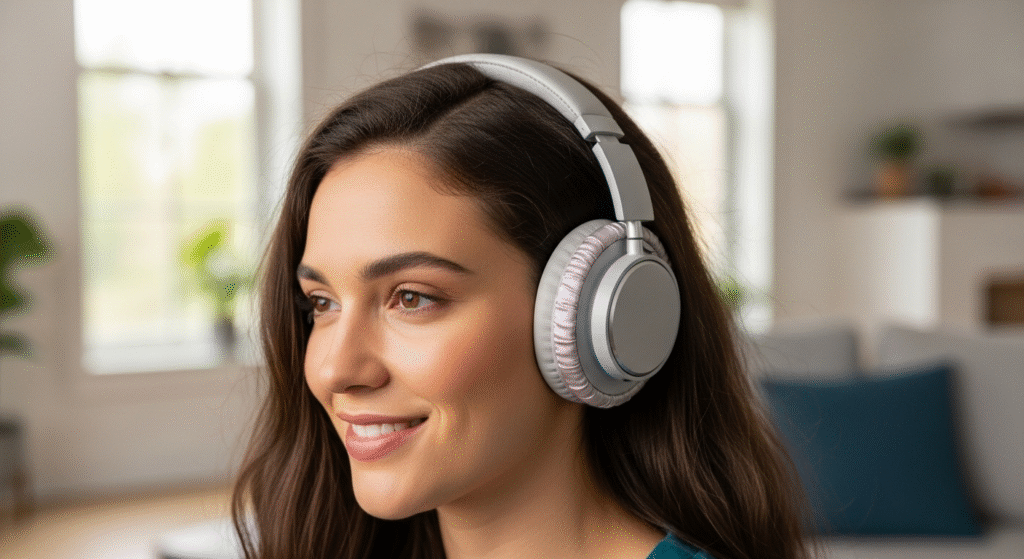
Adjusting Headphone Fit for Comfort
One of the easiest ways to prevent headphone-related hair loss is by adjusting the fit of your headphones. Ensure that they are not too tight and that they sit comfortably on your head without putting undue pressure on your scalp. Over-ear headphones tend to be more scalp-friendly, but on-ear headphones can still be worn if they’re adjusted to fit loosely.
Choose headphones with adjustable headbands to customize the fit and reduce pressure.
Taking Breaks from Headphone Use
Long hours of headphone use can put continuous pressure on your scalp. To minimize the risk of hair loss, take regular breaks from wearing them. Ideally, remove your headphones every 30 minutes to give your scalp a rest. This will reduce the build-up of pressure and allow your hair follicles to recover.
Hair Care Tips for People Who Use Headphones
If you wear headphones regularly, it’s important to take care of your scalp and hair to combat any potential damage:
- Scalp massages: Stimulate blood circulation and relieve tension with a gentle scalp massage.
- Use hair-friendly products: Avoid harsh shampoos or conditioners that can weaken hair.
- Hydrate your hair: Use nourishing oils like argan or coconut oil to keep hair follicles healthy.
Expert Opinions on Headphones and Hair Loss
Case Studies and Personal Stories
Many individuals have shared their experiences with headphone-related hair loss. For instance, one 28-year-old woman reported noticing thinning hair around her ears after wearing tight-fitting on-ear headphones during her daily commute. After switching to looser, over-ear headphones and practicing regular scalp care, she saw a noticeable improvement in hair volume.
FAQs
Can Wearing Headphones Cause Thinning Hair?
Yes, prolonged use of headphones, especially tight or on-ear models, can contribute to hair thinning or traction alopecia due to continuous pressure on the scalp.
How Long Should I Wear Headphones Without Causing Hair Loss?
To minimize the risk of hair loss, limit headphone use to 30-minute intervals, followed by short breaks. Adjust the fit for comfort, and avoid overly tight headphones.
Are Wireless Headphones Less Likely to Cause Hair Loss?
Wireless headphones generally don’t have any additional impact on hair loss compared to wired headphones. However, the fit and design of the headphones are more important factors in preventing hair damage.
What Are the Best Headphones for Avoiding Hair Damage?
Over-ear headphones with soft, padded ear cups are the best option for preventing hair loss. These headphones distribute pressure more evenly across the head and minimize scalp friction.
Conclusion: Protect Your Hair While Enjoying Your Headphones
Headphone-related hair loss is a real concern, but with the right precautions, it’s preventable. Choosing the right headphones, adjusting their fit, and taking breaks during use can protect your hair and scalp from damage. If you notice signs of hair thinning, consult a dermatologist for expert advice and treatment.
Ready to Take Your Next Step
Are you worried about hair loss caused by headphone use? Book a consultation with Dr. Uzma Irfan, an ISHRS-certified surgeon in Islamabad today to find personalized solutions for your hair health and get back to enjoying your favorite music without the risk of damage.

